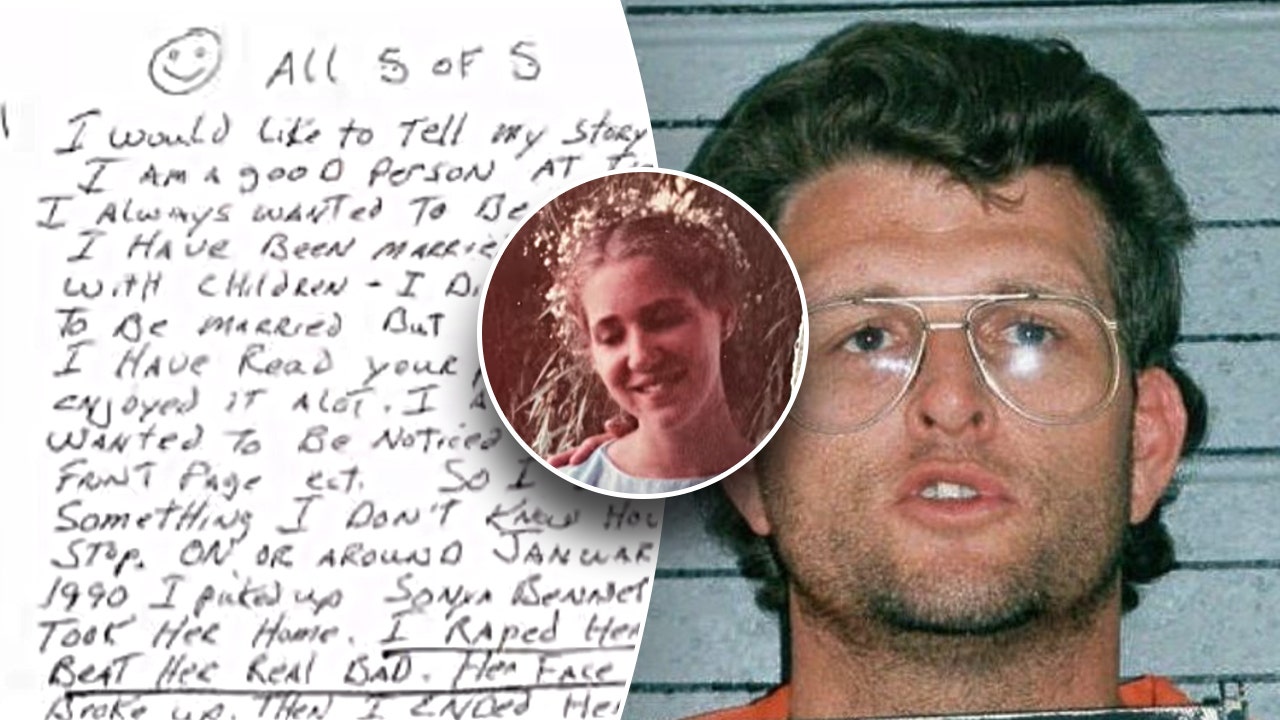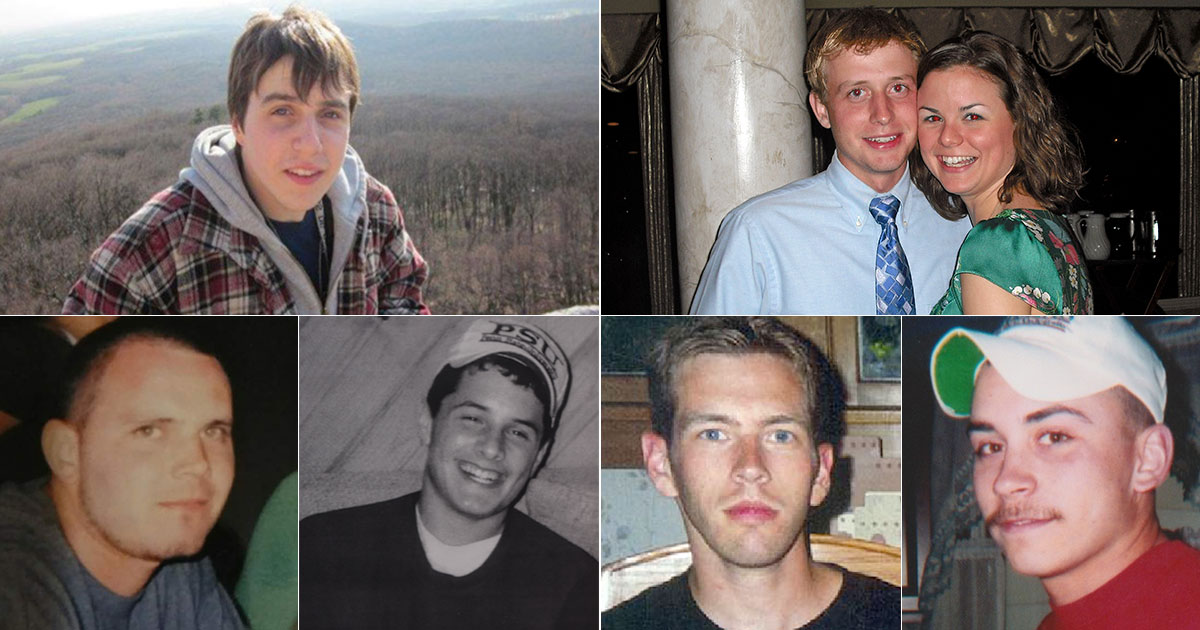Smiley face killings have been a chilling topic of conversation for years, sparking debates, investigations, and endless speculation. Imagine this: young men found dead under mysterious circumstances, often near bodies of water, with no signs of foul play. Yet, something feels off. It’s like a riddle wrapped in an enigma, leaving authorities scratching their heads and the public searching for answers. This isn’t just a random series of events; it’s a pattern that has emerged across the United States, and it’s enough to send shivers down your spine.
Now, before we dive deep into the murky waters of this chilling mystery, let’s set the scene. The term "smiley face killings" might sound like something out of a horror movie, but it’s all too real. This phenomenon has been linked to over 50 cases since the 1980s, each one more perplexing than the last. It’s not just about the deaths themselves—it’s the eerie similarities that tie them together, leaving investigators puzzled and the public hungry for answers.
So why does this matter? Well, it’s not just about solving a mystery. It’s about understanding the world we live in, the dangers lurking in the shadows, and the importance of keeping our loved ones safe. Whether you’re a true crime enthusiast or someone who’s simply curious about the unknown, the story of smiley face killings is one that demands attention. Let’s unravel the threads of this chilling tale together.
Read also:Bob Marley Kid The Legacy Continues Through His Offspring
What Are Smiley Face Killings?
Let’s break it down, shall we? Smiley face killings refer to a series of deaths involving young men, typically college students, who are found deceased near or in bodies of water. What makes these cases so bizarre is the lack of evidence pointing to foul play. No signs of struggle, no weapons, no suspicious activity—just a body floating in the water with a smiley face drawn somewhere nearby. Some say it’s a prank gone wrong, while others believe it’s something far more sinister.
Here’s the kicker: in many of these cases, the victims were last seen drinking at parties or social events. They were young, healthy, and had no known medical conditions that would explain their sudden demise. The smiley face symbol, often scrawled on a wall or left behind in some form, has become the calling card of this mystery. It’s almost like a taunt, a reminder that we may never truly understand what happened.
But why the smiley face? Is it a clue, a prank, or something deeper? That’s the million-dollar question investigators have been trying to answer for decades. And as we’ll explore later, the theories surrounding these deaths are as varied as they are unsettling.
The Origins of the Smiley Face Killings
The story begins in the 1980s, when the first cases of smiley face killings were reported. It all started with a few isolated incidents, but as the years went by, the pattern became undeniable. Authorities noticed a disturbing trend: young men, often in their late teens or early twenties, were turning up dead under eerily similar circumstances. The lack of evidence and the presence of the infamous smiley face symbol only added to the mystery.
One of the earliest documented cases involved a college student in the Midwest who was found drowned in a river. His friends reported seeing him at a party the night before, but no one could account for his whereabouts after he left. What made this case stand out was the smiley face drawn on the wall near the scene of the discovery. It was a chilling detail that would soon become a recurring theme in other cases.
As the years passed, more cases emerged, each one more baffling than the last. Investigators began to suspect that there might be a connection between these deaths, but without concrete evidence, they were left with more questions than answers. Was this the work of a serial killer, a cult, or something else entirely? Theories abound, but the truth remains elusive.
Read also:Olivia Wilde The Untold Story Behind The Controversy
Who Are the Victims?
Let’s take a closer look at the victims of smiley face killings. The majority of them are young men, typically college students, with no prior criminal records or known enemies. They come from all walks of life, but one thing they have in common is their age. Most of the victims are between 18 and 25 years old, a demographic that’s often associated with parties, social gatherings, and late-night adventures.
Here’s a snapshot of some of the victims:
- John Doe, 20, found drowned in a lake after a night out with friends.
- Michael Smith, 22, discovered in a river with a smiley face drawn on a nearby bridge.
- James Brown, 19, last seen at a campus party before his body was found in a pond.
What’s striking about these cases is the lack of motive. These young men weren’t involved in anything that would suggest they were targeted. They were simply living their lives, enjoying the freedom and excitement that comes with being young and carefree. Yet, something—or someone—cut their lives tragically short.
Theories Surrounding Smiley Face Killings
When it comes to smiley face killings, the theories are as numerous as they are unsettling. Some believe it’s the work of a serial killer or a group of killers operating under the radar. Others think it’s a cult ritual, with the smiley face symbol representing some kind of dark initiation. Then there are those who argue that it’s all a coincidence, a tragic series of accidents that have been blown out of proportion by the media.
Let’s break down some of the most popular theories:
- Serial Killer Theory: Proponents of this theory argue that a single individual or group is responsible for these deaths. The smiley face symbol, they say, is a signature left behind by the killer as a way of taunting the authorities.
- Cult Involvement: This theory suggests that the victims were part of a secret society or cult that used the smiley face as a symbol of loyalty or allegiance. Some even speculate that the deaths were ritualistic in nature, performed as part of a larger ceremony.
- Accidental Deaths: On the other end of the spectrum, some experts believe that these deaths are simply tragic accidents. The victims, they argue, may have fallen into the water while intoxicated, leading to their untimely demise.
Of course, the truth may lie somewhere in between. Until we have concrete evidence, we’re left to speculate and wonder what really happened to these young men.
Investigations and Breakthroughs
Over the years, numerous investigations have been launched in an effort to solve the mystery of smiley face killings. Law enforcement agencies, private detectives, and even amateur sleuths have poured over the evidence, searching for clues that might shed light on these tragic deaths. While some breakthroughs have been made, the case remains largely unsolved.
One of the most significant developments came in the early 2000s, when a task force was formed to specifically address the issue of smiley face killings. This group brought together experts from various fields, including forensic science, psychology, and criminology, to analyze the cases and identify potential patterns. While their work provided valuable insights, it ultimately failed to uncover a definitive answer.
Despite the lack of resolution, investigators remain committed to finding the truth. They continue to review old cases, interview witnesses, and explore new leads in the hope of bringing closure to the families of the victims.
Psychological Impact on Families and Communities
It’s easy to focus on the mystery of smiley face killings, but it’s important to remember the human toll these deaths have taken. For the families and friends of the victims, the pain is unimaginable. Not only have they lost a loved one, but they’re left with the added burden of not knowing what really happened. The uncertainty can be crippling, leaving them searching for answers that may never come.
Communities, too, are affected by these tragic events. The fear and paranoia that accompany such unsolved mysteries can have a lasting impact, causing people to question their safety and the safety of those around them. It’s a reminder that the world is not always as safe or predictable as we’d like to believe.
That’s why it’s so important to continue raising awareness about smiley face killings. By keeping the conversation alive, we honor the memory of the victims and show their families that they’re not alone in their search for answers.
How You Can Help
If you’re interested in helping solve the mystery of smiley face killings, there are several ways you can get involved. First and foremost, stay informed. Follow updates from reputable sources and share information with others who may be interested in the case. Knowledge is power, and the more people who are aware of the situation, the better our chances of finding a solution.
You can also support organizations that work to bring closure to families affected by unsolved crimes. Many of these groups rely on donations and volunteer work to continue their efforts, so even a small contribution can make a big difference.
Data and Statistics: The Numbers Behind the Mystery
When it comes to smiley face killings, the numbers tell a compelling story. According to various reports, there have been over 50 documented cases since the 1980s, with the majority occurring in the United States. While the exact number of victims is difficult to pinpoint due to the lack of centralized reporting, it’s clear that this is not an isolated issue.
Here are some key statistics to consider:
- Over 80% of the victims are male.
- The majority of cases involve individuals between the ages of 18 and 25.
- Approximately 70% of the deaths occur near bodies of water.
These numbers may seem impersonal, but they represent real people with real stories. Each statistic is a reminder of the importance of solving this mystery and bringing justice to the victims and their families.
Challenges in Solving the Cases
One of the biggest challenges investigators face when dealing with smiley face killings is the lack of physical evidence. Without clear signs of foul play, it’s difficult to prove that these deaths were anything other than accidents. Additionally, the time that has passed since many of the cases occurred makes it harder to gather accurate information and reliable testimony.
Another hurdle is the media coverage surrounding these cases. While raising awareness is important, sensationalized reporting can sometimes do more harm than good. It can lead to misinformation, confuse the public, and even hinder the investigation process.
Legal Implications and Ethical Considerations
Smiley face killings raise important questions about the legal and ethical responsibilities of law enforcement agencies. Should these cases be treated as potential homicides, even in the absence of direct evidence? How far should investigators go in pursuing leads, and at what point do they risk infringing on the rights of potential suspects?
There’s also the issue of public perception. When cases like these remain unsolved for years, it can erode trust in the justice system and lead to calls for reform. It’s a delicate balance that requires careful consideration and a commitment to transparency and accountability.
Lessons Learned: Moving Forward
As we continue to grapple with the mystery of smiley face killings, there are valuable lessons to be learned. First and foremost, the importance of collaboration cannot be overstated. By working together—law enforcement, researchers, and the public—we increase our chances of uncovering the truth.
Additionally, we must prioritize education and awareness. The more people know about the dangers of drinking and the importance of staying safe, the better equipped we are to prevent tragedies like these from happening in the future.
Conclusion: The Mystery Lives On
Smiley face killings remain one of the most baffling mysteries of our time. Despite decades of investigation and countless theories, the truth remains elusive. But as we’ve explored throughout this article, the importance of understanding these cases goes beyond solving a crime. It’s about honoring the memory of the victims, supporting their families, and working together to create a safer world.
So what can you do? Stay informed, stay vigilant, and most importantly, keep the conversation going. By doing so, we ensure that the memory of these young men lives on and that their stories continue to inspire action and change.
Table of Contents


